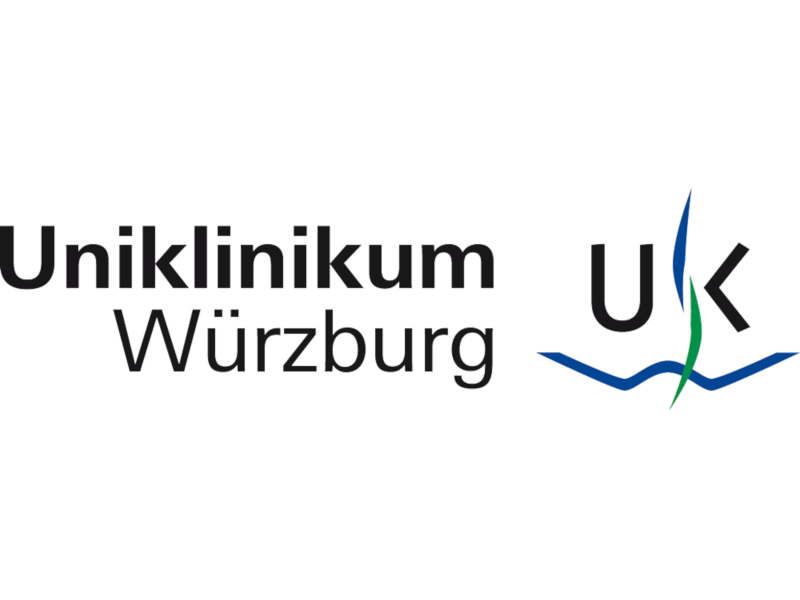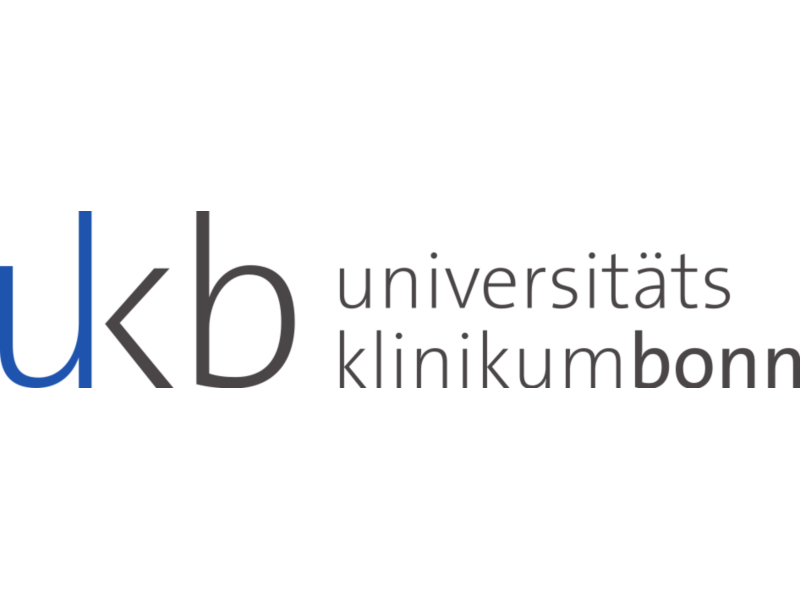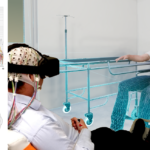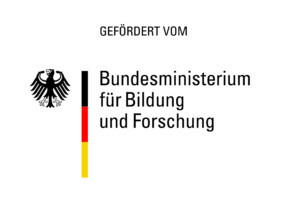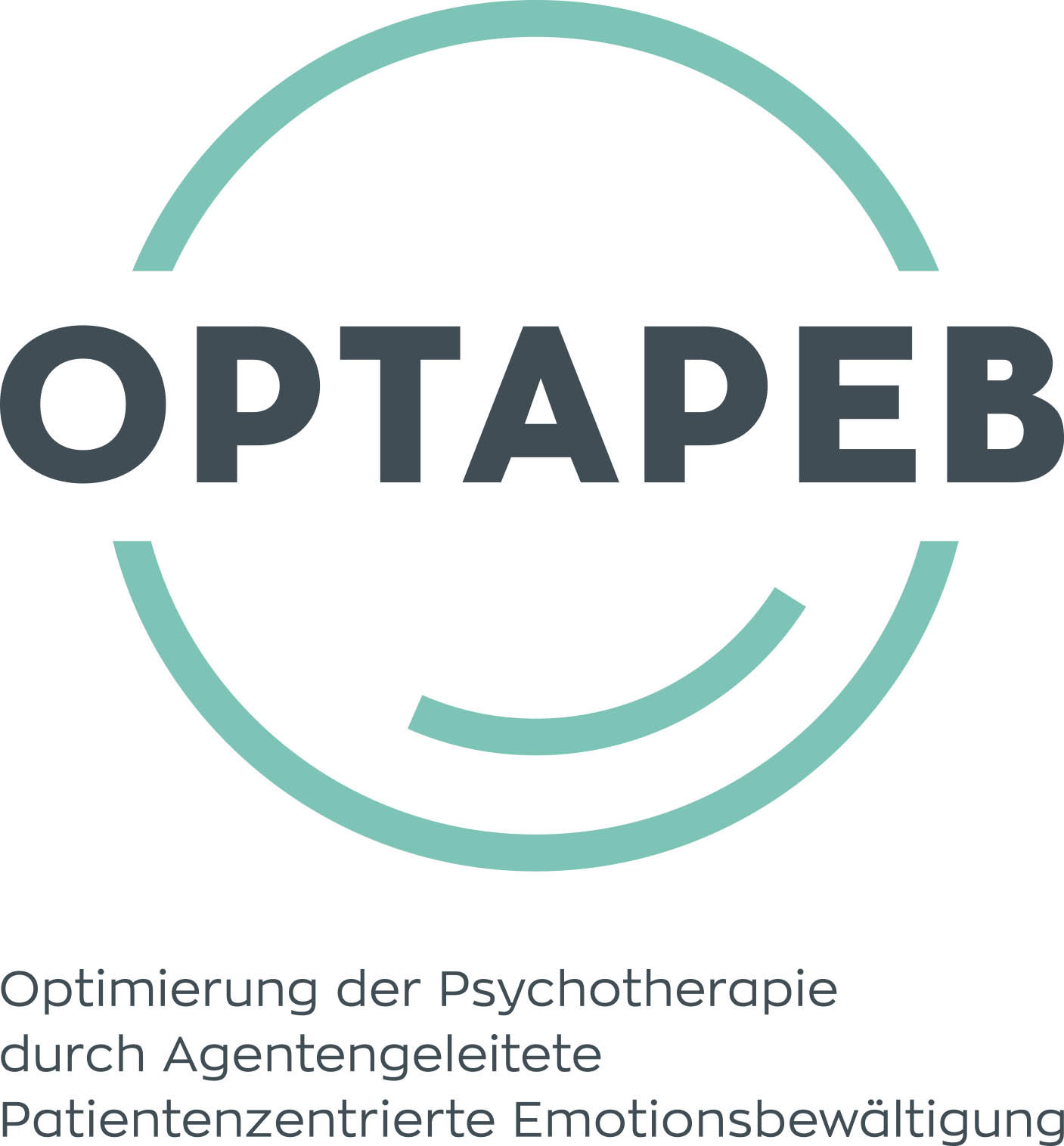Empirical research using virtual reality
Virtual Reality as a research method offers the following advantages:
- Virtual environments and VR simulations are highly standardizable, controllable and repeatable compared to the real situation
- VR studies offer a higher ecological validity compared to pen and paper studies, studies with image or video stimuli – with nevertheless almost complete experimental control
- VR systems allow an implicit recording of behavioral measures like: Approach distance, head, body and eye movements with various evaluation possibilities of objective measures
- VR simulations can be modified and reused
In experimental psychological research, therapy research, safety research, CyberSession is used as a research method for controlled empirical studies with highly immersive virtual reality (HMD, projection) by the following institutions, among others:
Research projects with CyberSession-VR
In the following research projects CyberSession is being utilized for the use of virtual reality as a research method.
REHALITY
MOTIVATION
Every year, 270,000 people in Germany suffer a stroke and are forced to follow a long and exhausting path of neurorehabilitation in order to restore their physical and mental functioning to the point where social and professional reintegration is possible. Despite the high level of resources devoted to neurological rehabilitation measures, the time available to physiotherapists, occupational therapists and therapists for individual therapy is very limited.
INNOVATION
Digital therapy concepts that can be carried out independently with the help of virtual reality (VR) also offer great potential for faster and more successful therapy of chronic stroke. The perception of a movement of the paralyzed body part in the virtual world can promote the healing process. New research results show that the state of the brain at the time of stimulation is decisive for whether or not plastic changes occur in the brain networks. However, the success of the therapy requires not only highly immersive virtual reality but also a control system tailored to the individual patient: each person and each stroke is unique and an optimal therapy must be tailored to the specific disturbance of brain activity. This project implements the intensive research and development process that makes the increasingly technically advanced VR and electroencephalography (EEG) hardware systems also therapeutically effective.
PERSPECTIVE
This new form of therapy is intended to close the gap between inpatient acute treatment in hospital, rehabilitation measures and therapy options in the home environment, thereby saving considerable follow-up costs for health and social insurance funds and accelerating the successful return of stroke patients to an independent life and earning capacity.
Contact
VTplus GmbH: Dr. Bastian Lange, Contact: rehality@vtplus.eu
Network Coordinator Neurological University Hospital Tübingen: Prof. Dr. Ulf Ziemann
OPTAPEB
MOTIVATION
In Germany, around 6.9 million people suffer from clinically relevant anxiety disorders. The social costs are enormous. In addition, anxiety is an accompanying component in almost all other mental disorders. It is therefore important that the therapeutic approaches are accepted, effective and process-optimized.
GOALS AND PROCEDURE
A central element in the psychotherapy of anxiety disorders is to expose those affected to the anxiety-inducing situations. In the project, a system will be developed that multimodally records the emotional reactions of clients during such exposures and extracts from them data fusion parameters that are relevant for the further course. From these parameters microinterventions are derived, which are made available to the client by a virtual agent in an intuitive interaction. Prognoses for successful microinterventions are derived by machine processing of the data sets obtained in numerous exposures.
INNOVATIONS AND PERSPECTIVES
The technological innovation in the field of psychotherapy is characterized by a user-centered approach in development and intuitive interaction with a virtual agent. This improves the effectiveness and practicability of psychotherapeutic interventions for anxiety disorders and their long-term effectiveness. Legal and ethical concerns are taken into account as well as the autonomy and informational self-determination of the clients. Further informations ›
Contact
VTplus GmbH: Prof. Dr. J. Müller, Kontakt: optapeb@vtplus.eu
Network Coordinator University of Regensburg, Chair of Clinical Psychology and Psychotherapy: Prof. Dr. A. Mühlberger
EVElyn Virtual Reality Therapy
MOTIVATION: EXPOSURE THERAPY IN THE TREATMENT OF ANXIETY DISORDERS
In Germany, approximately 15.3 percent of the adult population and approximately 10 percent of children and adolescents suffer from an anxiety disorder each year. Anxiety disorders have a tendency to become chronic and are associated with a major impairment of quality of life. Patients with anxiety disorders usually consistently avoid the situations they fear. Classical exposure in vivo is an established psychotherapeutic method of behavioral therapy. In this method, patients expose themselves in real life, under the guidance of the therapist, to the anxiety-provoking situations or objects that they otherwise avoid. This allows them to experience that their fears are not realistic and that the feared consequences do not occur at all. In this way, patients learn to abandon their avoidance behavior and overcome their fear. Exposure therapy is very effective and has been proven in the therapy of anxiety disorders in numerous scientific studies.
METHOD: EXPOSURE THERAPY IN VIRTUAL REALITY
Exposure therapy in virtual reality (VR) is an innovative form of psychotherapeutic treatment for anxiety disorders. In this method, patients experience the anxiety-triggering situations virtually. They are exposed via VR video goggles to multimodal virtual environments that contain the anxiety-provoking objects and/ or situations.
VR holds great potential. For one thing, there is evidence that patients are more willing to be exposed in VR than in vivo. On the other hand, the organizational and time requirements for the therapist are reduced because the exposure can be performed in the treatment room. In addition, situations can be simulated in the context of a treatment that cannot be produced in vivo or only with great effort, e.g., social situations such as lectures and activities such as driving or air travel. Furthermore, the exercises in the fearful situations can be repeated as often as desired in VR, which can intensify and deepen the exposure therapy.
The current S3 guideline for the treatment of anxiety disorders also recommends the use of confrontation therapy with virtual reality (VR) and points to a lack of available solutions. This is exactly where the EVElyn project comes in.
THE JOINT RESEARCH PROJECT EVElyn
EVElyn stands for Efficiency Enhancement and Care Optimization in Outpatient Psychotherapy of Anxiety Disorders: Developing a Methodology for Using Virtual Reality to Conduct Exposure Exercises.
The EVElyn project offers the opportunity to bring VR exposure therapy as an innovative psychotherapy method a big step closer to everyday application in practice and thus contribute to closing a relevant gap in care. Furthermore, the project can serve the interests of science and psychotherapy research, because VR exposure therapy is excellently suited for scientific studies. With a VR system suitable for everyday use, the processes during successful psychotherapy can be studied in detail. Further information ›
Contact
VTplus GmbH: Prof. Dr. J. Müller, Contact: evelyn@vtplus.eu
Network coordinator Heilbronn University: Prof. Dr. Gerrit Meixner
PROTECT-AD
15% of all German citizens suffer from an anxiety disorder. Anxiety disorders – such as panic disorder, agoraphobia, phobias or the so-called generalized anxiety disorder – are among the most expensive and stressful diseases in health care due to their early onset and chronic course (1,2). They are typically not recognized by the health system or only after many years. But even if the disease is diagnosed correctly, the vast majority of affected patients do not receive suitable therapy.
The consequences are serious: patients often suffer for decades. They develop additional diseases such as clinical depression or addictions. In addition, personal, interpersonal and professional development is severely disturbed and many patients are driven into isolation and occupational disability.
The PROTECT-AD research programme, funded by the German government, aims to fundamentally change these deficiencies. We want to continue to improve the most effective and scientifically proven form of therapy, “cognitive behavior therapy (KVT)” in various ways and to change it in such a way that it becomes accessible and effective in the long term for all those affected. The research association PROTECT-AD is funded by the Federal Ministry of Education and Research (BMBF) with a sum of 5.3 million over 4 years.
SCIENTIFIC APPROACH
Only if we understand the reasons for the currently poor care and the mechanisms of action of successful anxiety therapy can we improve the care situation. Therefore, many scientific questions are dealt with in depth in the PROTECT-AD network.
At the heart of the research network are two clinical studies dealing with so-called “extinction learning” in children and adults. Extinction learning – the alteration of anxiety-promoting neuronal and cognitive structures – is regarded as a central mechanism of action in anxiety therapy. PROTECT-AD uses psychophysiological, imaging and genetic procedures that help us to better understand how our thinking, feeling and acting as well as biological processes in our body change during therapy.
In addition, we work with practitioners to develop new treatment concepts so that we can offer those affected the best possible treatment methods across the board.
COOPERATION PARTNERS IN THE RESEARCH NETWORK
PROTECT-AD brings together the seven university centres best specialised in the psychotherapeutic treatment of anxiety disorders: The Technische Universität Dresden, the Westfälische Wilhelms-Universität Münster, the Ruhr-Universität Bochum, the Ernst-Moritz-Arndt-Universität Greifswald, the Philipps-Universität Marburg, the Julius-Maximilians-Universität Würzburg, the Humboldt-Universität zu Berlin and the Charité Berlin. Visit the websites of the centres in your area for more information!
The research association is headed by Prof. Dr. Hans-Ulrich Wittchen, head of the Institute of Clinical Psychology and Psychotherapy at Dresden University of Technology and director of the affiliated outpatient and day clinic for psychotherapy at Dresden University of Technology. Further informations ›
SFB / TRR 58
Special research area “Fear, Anxiety, Anxiety Disorders”
The overall aim of the transregional collaborative research center (SFB/TRR58) is to provide a better understanding of the mechanistic basis of fear, anxiety states and related disorders. The center is comprised of scientists from Münster, Hamburg, Mainz, and Würzburg universities, which contribute their expertise to an interdisciplinary collaboration, linking basic and clinical research. This has created the unique opportunity to detect molecular, systems and evolutionary mechanisms of fear, anxiety and anxiety disorders. The center is organized in three research sections, devoted to (A) “Experimental animal studies”, (B) “Human pre-clinical studies”, (C) “Clinical translation and intervention”, and a central project (Z02) focusing on “Functional genomics and gene-by-environment interactions”. Further informations ›
SKRIBT / SKRIBT+
Joint projects “Protection of critical bridges and tunnels in the course of roads” (SKRIBT) and SKRIBTplus as part of the research for civil security programme, funded by the Federal Ministry of Education and Research. Further informations ›
Papers
In the following, selected studies using CyberSession-VR are listed classified according to the research areas – anxiety research, security research, neurophysiological research and further experimental psychological research. We are happy to include further studies by CyberSession users here. Please contact › us.
Anxiety Research
Lange B., Pauli P. (2019). Social anxiety changes the way we move – A social approach-avoidance task in a virtual reality CAVE system. PLoS ONE 14(12): e0226805. doi: 10.1371/journal.pone.0226805
Gromer, D., Madeira, O., Gast, P., Nehfischer, M., Jost, M., Müller, M., … & Pauli, P. (2018). Height Simulation in a Virtual Reality CAVE System: Validity of Fear Responses and Effects of an Immersion Manipulation. Frontiers in Human Neuroscience, 12, 372. doi: 10.3389/fnhum.2018.00372
Reichenberger, J., Diemer, J., Zwanzger, P., Notzon, S., & Mühlberger, A. (2017). Soziales Kompetenztraining in Virtueller Realität bei sozialer Angst: Validierung relevanter Interaktionssituationen. Zeitschrift für Klinische Psychologie und Psychotherapie, 46, 236-247. doi: 10.1026/1616-3443/a000444
Reichenberger, J., Porsch, S., Wittmann, J., Zimmermann, V., & Shiban, Y. (2017). Social Fear Conditioning Paradigm in Virtual Reality: Social vs. Electrical Aversive Conditioning. Frontiers in psychology, 8, 1979. doi: 10.3389/fpsyg.2017.01979
Shiban, Y., Peperkorn, H., Alpers, G., Pauli, P. & Mühlberger, A. (2016). Influence of perceptual cues and conceptual information on the activation and reduction of claustrophobic fear. Journal of Behavior Therapy and Experimental Psychiatry.(2016) Volume 51, Pages 19-26. doi: 10.1016/j.jbtep.2015.11.002
Shiban, Y., Reichenberger, J., Neumann, I. D., & Mühlberger, A. (2015). Social conditioning and extinction paradigm: A translational study in virtual reality. Front Psychol, 6, 400. doi: 10.3389/fpsyg.2015.00400
Glotzbach-Schoon, E; Andreatta, M; Mühlberger, A; Pauli, P (2013). Context conditioning in virtual reality as a model for pathological anxiety.e-Neuroforum. 2013;4,3:63-70. doi: 10.1007/s13295-013-0047-z
Glotzbach-Schoon, E., Tadda, R., Andreatta, M., Tröger, C., Ewald, H., Grillon, C., Pauli, P., Mühlberger, A.(2013). Enhanced Discrimination Between Threatening and Safe Contexts in High-Anxious Individuals. Biological Psychology. doi: 10.1016/j.biopsycho.2013.01.011
Peperkorn HM, Mühlberger A. (2013). The impact of different perceptual cues on fear and presence in virtual reality. Studies in Health Technololgy and Informatics. 2013;191:75-9. PMID
Glotzbach, E., Ewald, H., Andreatta, M., Pauli, P., Mühlberger, A. (2012) Contextual fear conditioning predicts subsequent avoidance behavior in a virtual reality environment. Cognition and Emotion. 26, 1256-1272. doi: 10.1080/02699931.2012.656581
Mühlberger, A., Neumann, R., Lozo, L., Müller, M. & Hettinger, M. (2012). Bottom-up and top-down influences of beliefs on emotional responses: Fear of heights in a virtual environment. In B.K. Wiederhold and G. Riva (Eds.), Annual Review of Cybertherapy and Telemedicine 2012 (pp 133-137). IOS Press. Amsterdam.
Tröger, C, Ewald, H., Glotzbach, E., Pauli, P., & Mühlberger, A. (2012). Does pre-exposure inhibit fear context conditioning? A Virtual Reality Study. Journal of Neural Transmission, 119, 709-719. doi: 10.1007/s00702-011-0757-8
Wieser, M.J., Pauli, P., Grosseibl, M., Molzow, I., & Mühlberger, A. (2010). Virtual Social Interaction in Social Anxiety – The Impact of Sex, Gaze and Interpersonal Distance. CyberPsychology, Behavior, and Social Networking. 13, 547-554. doi: 10.1089/cyber.2009.0432
Wieser, M. J., Pauli, P., Alpers, G. W., & Mühlberger, A. (2009). Is eye to eye contact really threatening and avoided in social anxiety?—An eye-tracking and psychophysiology study. Journal of anxiety disorders, 23(1), 93-103. doi: 10.1016/j.janxdis.2008.04.004
Mühlberger, A., Wieser, M. J. and Pauli, P. (2008). Visual attention during virtual social situations depends on social anxiety. CyberPsychology & Behavior, 11, 425-430. doi: 10.1089/cpb.2007.0084
Mühlberger, A., Bülthoff, H. H., Wiedemann, G. & Pauli, P. (2007). Virtual reality for psychophysiological assessment of phobic fear: responses during virtual tunnel drives. Psychological Assessment. 19. 340-346. doi: 10.1037/1040-3590.19.3.340
Therapeutic Research
Herrmann, M., Katzorke, A., Busch, Y., Gromer, D., Polak, T., Pauli, P. & Deckert, J. (2017). Medial prefrontal cortex stimulation accelerates therapy response of exposure therapy in acrophobia. Brain Stimulation, Volume 10, Issue 2, Pages 291-297. doi: 10.1016/j.brs.2016.11.007
Shiban, Y., Diemer, J., Müller, J., Brütting-Schick, J., Pauli, P. & Mühlberger, A. (2017). Diaphragmatic breathing during virtual reality exposure therapy for aviophobia: functional coping strategy or avoidance behavior? a pilot study. BMC Psychiatry, 17:29. doi: 10.1186/s12888-016-1181-2
Shiban, Y., Peperkorn, H., Alpers, G., Pauli, P. & Mühlberger, A. (2016). Influence of perceptual cues and conceptual information on the activation and reduction of claustrophobic fear. Journal of Behavior Therapy and Experimental Psychiatry.(2016) Volume 51, Pages 19-26. doi: 10.1016/j.jbtep.2015.11.002
Peperkorn, H. M., Diemer, J. E., Alpers, G. W., & Mühlberger, A. (2016). Representation of patients’ hand modulates fear reactions of patients with spider phobia in virtual reality. Frontiers in psychology, 7, 268. doi: 10.3389/fpsyg.2016.00268 Shiban, Y., Brütting, J., Pauli, P., & Mühlberger, A. (2015). Fear reactivation prior to exposure therapy: does it facilitate the effects of VR exposure in a randomized clinical sample? Journal of behavior therapy and experimental psychiatry, 46, 133-140. doi: j.jbtep.2014.09.009
Shiban, Y., Brütting, J., Pauli, P., & Mühlberger, A. (2015). Fear reactivation prior to exposure therapy: does it facilitate the effects of VR exposure in a randomized clinical sample?. Journal of behavior therapy and experimental psychiatry, 46, 133-140. doi: 10.1016/j.jbtep.2014.09.009
Shiban, Y., Schelhorn, I., Pauli, P., & Mühlberger, A. (2015). Effect of combined multiple contexts and multiple stimuli exposure in spider phobia: a randomized clinical trial in virtual reality. Behaviour research and therapy, 71, 45-53. doi: 10.1016/j.brat.2015.05.014
Notzon, S., Deppermann, S., Fallgatter, A., Diemer, J., Kroczek, A., Domschke, K., … & Ehlis, A. C. (2015). Psychophysiological effects of an iTBS modulated virtual reality challenge including participants with spider phobia. Biological psychology, 112, 66-76. doi: 10.1016/j.biopsycho.2015.10.003
Peperkorn, H. M., Alpers, G. W., & Mühlberger, A. (2014). Triggers of fear: perceptual cues versus conceptual information in spider phobia. Journal of clinical psychology, 70(7), 704-714. doi: 10.1002/jclp.22057
Diemer, J., Domschke, K., Mühlberger, A., Winter, B., Zavorotnyy, M., Notzon, S., Silling, K., Arolt, V. & Zwanzger, P. (2013). Acute anxiolytic effects of quetiapine during virtual reality exposure—A double-blind placebo– controlled trial in patients with specific phobia. European Neuropsychopharmacology, 23, 1551– 1560. doi: 10.1016/j.euroneuro.2013.01.001 Brütting, J. (2013). Psychotherapie spezifischer Phobien: Die Bedeutung der Angstaktivierung für Therapieprozess und Therapieerfolg. Universität Würzburg. urn: urn:nbn:de:bvb:20-opus-80578
Shiban, Y., Pauli, P., & Mühlberger, A. (2013). Effect of multiple context exposure on renewal in spider phobia. Behaviour Research and Therapy, 51, 68-74. doi: 10.1016/j.brat.2012.10.007 Mühlberger, A., Sperber,
M., Wieser, M. J., Pauli, P. (2008). A virtual reality behavior avoidance test (VR-BAT) for the assessment of spider phobia. Journal of CyberTherapy & Rehabilitation 1,2.
Bärmann, S., Mühlberger, A., Müller, M., & Pauli, P. (2006). Einfluss visueller Tiefeninformation auf Gleichgewicht und Angsterleben bei Höhenängstlichen. In G. W. Alpers, H. Krebs, A. Mühlberger, P. Weyers & P. Pauli (Eds.), Wissenschaftliche Beiträge zum 24. Symposium der Fachgruppe Klinische Psychologie und Psychotherapie der DGPs (pp. 88). Würzburg: Pabst Science Publishers.
Mühlberger, A., Weik, A., Pauli, P. & Wiedemann, G. (2006). One-session virtual reality exposure treatment for fear of flying: one year follow-up and graduation flight accompaniment effects.Psychotherapy Research. 16, 26-40. doi: 10.1080/10503300500090944
Mühlberger, A., Petrusek, S., Herrmann, M. J. & Pauli, P. (2005). Biocyberpsychologie: Subjektive und physiologische Reaktionen von Flugphobikern und Gesunden bei Exposition mit virtuellen Flügen [Biocyber psychology: subjective and physiological reactions in flight phobics and normal subjects during flight simulations]. Zeitschrift für Klinische Psychologie und Psychotherapie. 34, 133-143.
Mühlberger, A., Wiedemann, G. & Pauli, P. (2005). Subjective and physiologic reactions of flight phobics during VR exposure and treatment outcome: What adds motion simulation? Annual Review of CyberTherapy and Telemedicine: A decade of VR, 3, 185-192.
Sperber, M., Mühlberger, A., & Pauli, P. (2005). Motivationale Einflüsse bei der Annäherung an virtuelle Spinnen. In J. Hoyer (Hrsg.), Klinische Psychologie und Psychotherapie 2005. Abstractband. Lengerich, Germany: Papst Science Publishers. (Seite 126)
Mühlberger, A., Wiedemann, G. & Pauli, P. (2003). Efficacy of a one-session virtual reality exposure treatment for fear of flying. Psychotherapy Research, 13(3), 323-336.
Mühlberger, A., Herrmann, M. J., Wiedemann, G., Ellgring, H. & Pauli, P. (2001). Repeated exposure of flight phobics to flights in virtual reality. Behaviour Research and Therapy, 39, 1033-1050. doi: 10.1016/S0005-7967(00)00076-0
Safety Research
Ronchi, E., Kinateder, M., Müller, M., Jost, M., Nehfischer, M. , Pauli, P. &. Mühlberger, A. (2015). Evacuation travel paths in virtual reality experiments for tunnel safety analysis. Fire Safety Journal 71 (0):257-267. doi: 10.1016/j.firesaf.2014.11.005
Kinateder, M., Müller, M., Jost, M., Mühlberger, A. & Pauli, P. (2014). Social influence in a virtual tunnel fire – influence of conflicting information on evacuation behavior. Journal of Applied Ergonomics. doi: 10.1016/j.apergo.2014.05.014
Kinateder, M., Ronchi, E., Gromer, D., Müller, M., Jost, M., Nehfischer, M., Mühlberger, A., & Pauli, P. (2014). Social influence on route choice in a virtual reality tunnel fire. Transportation Research Part F: Traffic Psychology and Behaviour, 26, Part A(0), 116-125. doi: 10.1016/j.trf.2014.06.003
Kinateder, M., Pauli, P., Müller, M., Krieger, J., Heimbecher, F., Rönnau, I., Bergerhausen, U., Vollmann, G., Vogt, P., & Mühlberger, A. (2013). Human Behaviour in Severe Tunnel Accidents: Effects of Information and Behavioral Training. Transportation Research Part F: Traffic Psychology and Behaviour, 17, 20-32. doi: 10.1016/j.trf.2012.09.001
Kinateder, M., Pauli, P., Müller, M., & Mühlberger, A. (2012). Stresserleben und verändertes Fahrverhalten nach einem virtuellen Autounfall. [Stress experience and changes in driving behaviour after a virtual driving accident]. Zeitschrift für Klinische Psychologie und Psychotherapie,41. 190-200. doi: 10.1026/1616-3443/a000152
Neurophysiological Research
Andreatta M., Neueder D., Genheimer H., Schiele M. A., Schartner C., Deckert J., Domschke K., Reif A., Wieser M.J., Pauli, P. (2018). Human BDNF rs6265 polymorphism as a mediator for the generalization of contextual anxiety. Journal of Neuroscience Research. doi: doi.org/10.1002/jnr.24345
Rodrigues J, Müller M, Mühlberger A, Hewig J.(2018). Mind the movement: Frontal asymmetry stands for behavioral motivation, bilateral frontal activation for behavior. Psychophysiology. 2018, 55:e12908. doi: 10.1111/psyp.12908
Genheimer, H., Andreatta M., Asan, E. & Pauli, P. (2017). Reinstatement of contextual conditioned anxiety in virtual reality and the effects of transcutaneous vagus nerve stimulation in humans. Scientific Reports, (2017)/7:17886. doi: 10.1038/s41598-017-18183-3
Ewald, H., Glotzbach-Schoon, E., Gerdes. A.B.M., Andreatta, M., Müller, M., Mühlberger, A. & Pauli, P. (2014). Delay and trace fear conditioning in a complex virtual learning environment—neural substrates of extinction. Front. Hum. Neurosci. 8:323. doi: 10.3389/fnhum.2014.00323
Mühlberger, A., Wieser, M. J. and Pauli, P. (2008). The darkness-enhanced startle responses in ecological valid environments: A virtual tunnel driving experiment. Biological Psychology, 77, 47-52. doi: 10.1016/j.biopsycho.2007.09.004
Further experimental psychological research with Virtual Reality
Kroczek LOH, Pfaller M, Lange B, Müller M. & Mühlberger A. (2020) Interpersonal Distance DuringReal-Time Social Interaction:Insights From Subjective Experience,Behavior, and Physiology. Frontiers in Psychiatry 11:561.doi: 10.3389/fpsyt.2020.00561
Santl, J., Shiban, Y., Plab, A., Wüst, S., Kudielka, B. M., & Mühlberger, A. (2019). Gender Differences in Stress Responses during a Virtual Reality Trier Social Stress Test. International Journal of Virtual Reality, 19(2), 2-15. doi: 10.20870/IJVR.2019.19.2.2912
Zimmer, P., Buttlar, B., Halbeisen, G., Walther, E., & Domes, G. (2019). Virtually stressed? A refined virtual reality adaptation of the Trier Social Stress Test (TSST) induces robust endocrine responses. Psychoneuroendocrinology, 101, 186-192. doi: 10.1016/j.psyneuen.2018.11.010
Shiban, Y., Diemer, J., Brandl, S., Zack, R., Mühlberger A., & Wüst, A. (2016). Trier Social Stress Test in vivo and in virtual reality: Dissociation of response domains. International Journal of Psychophysiology, 110, 47-55. doi: 10.1016/j.ijpsycho.2016.10.008
Schuler, M., Wolkenstein, L., Müller, M., Mühlberger, A., Plewnia, C. (2014). Measuring valence and naturalness of statements made by virtual agents, Proceedings of the International Society for Presence Research. url: researchgate.net/publication/262764148
Mühlberger, A., Neumann, R., Wieser, M. J. & Pauli, P. (2008). The impact of changes in spatial distance on emotional responses. Emotion, 8, 192-198. doi: 10.1037/1528-3542.8.2.192














